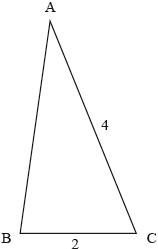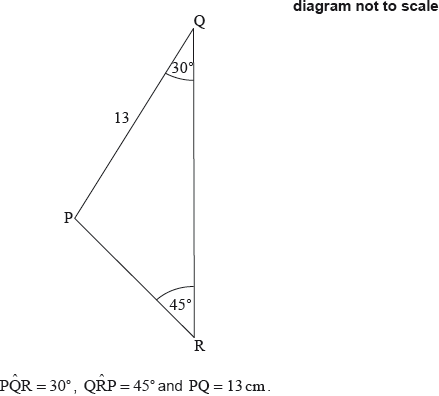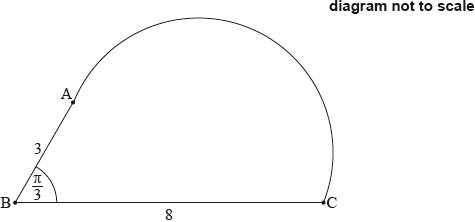| Date | November 2018 | Marks available | 2 | Reference code | 18N.2.SL.TZ0.S_7 |
| Level | Standard Level | Paper | Paper 2 | Time zone | Time zone 0 |
| Command term | Show that | Question number | S_7 | Adapted from | N/A |
Question
A communication tower, T, produces a signal that can reach cellular phones within a radius of 32 km. A straight road passes through the area covered by the tower’s signal.
The following diagram shows a line representing the road and a circle representing the area covered by the tower’s signal. Point R is on the circumference of the circle and points S and R are on the road. Point S is 38 km from the tower and RŜT = 43˚.
Let SR = . Use the cosine rule to show that .
Hence or otherwise, find the total distance along the road where the signal from the tower can reach cellular phones.
Markscheme
* This question is from an exam for a previous syllabus, and may contain minor differences in marking or structure.
recognizing TR =32 (seen anywhere, including diagram) A1
correct working A1
eg ,
AG N0
[2 marks]
Note: There are many approaches to this question, depending on which triangle the candidate has used, and whether they used the cosine rule and/or the sine rule. Please check working carefully and award marks in line with the markscheme.
METHOD 1
correct values for (seen anywhere) A1A1
= 9.02007, 46.5628
recognizing the need to find difference in values of (M1)
eg 46.5 − 9.02,
37.5427
37.5 (km) A1 N2
METHOD 2
correct use of sine rule in ΔSRT
eg , = 54.0835° (A1)
recognizing isosceles triangle (seen anywhere) (M1)
eg , two sides of 32
correct working to find distance A1
eg ,
,
37.5427
37.5 (km) A1 N2
[4 marks]




